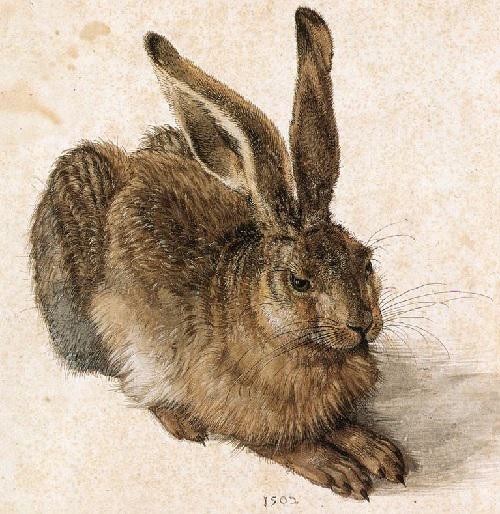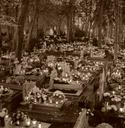The Living Planet assessment, drawn up by the Zoological Society of London and the World Wildlife Fund, has just published a report saying that global wildlife populations have fallen by 58% since 1970. The report suggests that if the trend continues this decline may reach two-thirds by the end of this decade. Whilst criticized by some environmental scientists in the US, this is nonetheless a reminder of the importance we need to place on monitoring the effects of human activity on the animal kingdom.
But the way we approach issues to do with wildlife differs greatly, depending on our local situation. It is important, for instance, for marine biologists to talk about preserving coral reefs from degradation, given how many species inhabit them. But if a devastating hurricane has just decimated all your other sources of food or income, as has just happened in the Philippines, it may be shocking, but hardly surprising, to find local fishermen dynamiting these very reefs in order to flush out fish. Starvation does not wait easily on the big picture.
In the US itself, environmental protection strategies can also have odd outcomes where wildlife is concerned. I have friends in Northampton, MA who regularly spot bears around their house: an early-morning cyclist there was chased by a black bear at the beginning of October. Significantly she didn’t report the incident for fear of the bear being shot: “I believe since it was so dark, the bear and I bumped into each other,” she told a local newspaper.
Not everyone would be so willing to say “excuse me” to a wild animal capable of inflicting harm. A couple of years ago, a book entitled Nature Wars by Jim Sterba outlined a growing crisis in human/wildlife interaction in sprawling urban areas that intersect with the habitat of newly burgeoning wildlife populations. Sterba’s book looked at the spread of human population on the East Coast (home to roughly two-thirds of Americans), from urban concentration into suburban and semi-rural sprawl, largely driven by modern reliance on the automobile.
Early settlers cleared away some 250 million acres of forest in the northeast of the United States. Yet with the urbanization of the human economy and the abandonment of small-scale agriculture, as well as the reliance on oil, coal and gas for fuel (rather than timber), one half to two thirds of this landscape has now been reforested: with predictable results that people with much less know-how concerning the realities of the wild now find themselves sharing their environment with unexpected visitors. Flocks of Canada geese depositing poop on your golf course, deer and beaver decimating trees in your front yard, and yes, black bears that bump into you on Main Street: this is hardly the stuff of sentimentally satisfying nature shows watched in the comfort of your living room.
The problem generates furious debate, as you can see if you google responses to Sterba’s book. For the question of our relationship with animals arouses strong passions. I know many people in my daughters’ generation who are fiercely committed vegans. It is as though the animal kingdom had somehow become a new religion: a re-boot of an age-old paganism. And yet at the heart of this reaction against eating and exploiting “anything that has eyes” (as one young friend put it to me) is a legitimate desire to live more responsibly and less greedily in a world where rapacity and violence seem to hold sway.
Hence the relevance of my late husband’s reflection on the Franciscan perspective on nature and the animal kingdom: Animals in the Hierarchy of Creation. If we understand the panoply of creatures as an expression of the glory of God, fallen with us and yet redeemed in Christ, then our relationship to that world is infused with an entirely new respect: not because we worship nature, but because we worship God through the very creation which manifests him, and is sanctified all over again by his incarnation as a human being in the heart of it. Something which gives a particular signification to the role of man as pivotal in this hierarchy. Then, and only then, has man “stripped from his soul the last rag of nature worship, and can return to nature.”
Whilst not worshiping nature, we do need to grasp the philosophical challenge that the rest of creation presents us with. As David Bentley Hart puts it: “In the end, it comes down to metaphysics (as all things do).” Mary Taylor’s piece on Hart, and Deborah Savage’s careful reflection on our relationship to non-rational animals both grapple with this. And indeed theology has a lot to bring to this discussion. What, for example, does the notion of ‘dominion’ entail in terms of our responsibility towards animals? “Our relationship to the goods of creation, and in particular to the animals, is complex,” writes Savage. “It calls for discernment of the good they represent, itself a multi-valent notion; it can be useful—but it can also be beautiful. Animals can be useful to man. But they are also creatures with their own inherent goodness and beauty. If our task is not only to till the Garden, but also to ‘keep it,’ it is the fullness of this truth that must be kept in mind.”
Aside from anything else, the reflections of theologians and philosophers from earlier phases of human civilization bring a perspective to the table which allow us to examine critically the issues which perplex us in the midst of preternaturally evolving ecological crises. Chris Hall reviews an important book, Nature’s Beautiful Order by Christopher Blum and John Cuddeback, which addresses the role of science in this respect. It is “that rarest of modern biology textbooks: one that starts with beauty and then works to facts and figures, rather than the reverse.” Such an approach is the only one which has any hope of informing a balanced perspective on the mystery that animal life presents to us.
The human perspective is one which has to begin with the substantive rather than the quantitative. This is particularly true when we are dealing with our relationship with animals. Rachel Coleman’s tribute to a classic in this field, Adolf Portmann’s Animal Forms and Patterns,and Fr. Paolo Prosperi’s “In Praise of Children’s Love of Animals,”provide crucial clues for reflecting on the mystery of creature-hood.Indeed, the reason for considering the issues through the eyes of a child is far from sentimental: it is sound anthropology. Prosperi goes to the heart of the original intuition about the role animals play in human development.
Just as for Adam the intimate dialogue or familiarity with God is the condition and, so to speak, the “sphere” in the context of which the naming of the animals can take place (Adam is instructed by God to name the animals and the animals “are brought in front of him” by God): in the same way, the confident intimacy between the child and his parents and their reliable presence are for the child the necessary context of his curious opening to the “marvelous mystery” of the world of animals.
In the light of this insight, I cannot help wondering whether there is a connection between our lack of welcome towards children, and our increasingly infantile attachment to pets instead. Alligators in the sewers of New York city aside, P.D. James, in The Children of Men, her prophetic novel about a humanity which has become universally infertile, portrays sad women pushing kittens around in prams (trs: baby buggies). Every human being needs meaningful contact in their life: but this need becomes stuck in an infantile phase if we do not connect with new generations of our own species. Animals are a source of wonder to the child within: but they can become a symptom of dissociation in society as well.
Speaking of dissociation, there are even more interesting questions about our interaction with animals. Temple Grandin’s Animals in Translation,reviewed for us by Melanie Danner,makes a fascinating link between autism in humans, and the non-verbal communication processes of animals. It isn't only a question of placing ourselves in their hooves—or paws—and seeing things from their perspective. But also of acknowledging that the sub-rational brain in a human being cannot be simply obviated or overcome by will-power or argumentation. We all have an amygdala: that’s just a fact of life. Contact with and observation of animals can do a great deal to help us to understand and negotiate the impact that this ‘reptilian brain’ has on human behavior.
A healthy respect for animals, both wild and domesticated, does not however mean we have to ideologize these questions. From animal-rights activists such as Peter Singer, to more moderate campaigners such as Bernard Rollin (both have books reviewed in this issue), the battle over ‘speciesism’ may ultimately be missing the point. A more interesting take is Joel Salatin’s carefully developed agricultural experiment, noted in this issue both through a reprinted interview with Salatin, and Katrina Bieler’s review of Michael Pollan's The Omnivore’s Dilemma,which uses Salatin’s farm to explore the issue of whether we can legitimately consume animal products.
“On Salatin’s Polyface Farm,” writes Bieler, “one can see healthy ecological relationships in action. In contrast to the monocultures found on industrial farms, at Polyface Farm one finds pasture lands, beef cattle, egg-laying hens, broiler chickens, pigs, rabbits, grapevines, an orchard, and forest land. Each part is related to the whole, and each part is considered in its wholeness. Salatin employs the word holon (crafted from the Greek holos, whole, and the ending -on, as in proton or neutron) to capture the fact that on a healthy farm the wholeness of a cow or a blade of grass must be cared for, which allows it to also be a part of the entirety of the farm—an intricate ecosystem.”
Isn’t this the central point? The human/animal interaction is part of a whole ecosystem which goes back millennia. The practices of modern industrialized exploitation arouse legitimate indignation in those concerned with the welfare of animals; but we have to understand the underlying factors which gave rise to this type of exploitation. Agri-business and battery cage animals are a modern aberration: a long tradition built up over centuries gives us a different perspective on animal husbandry. A long philosophical tradition regarding the natural sciences exists to help us balance the needs of humanity with a healthy respect for the rest of creation.
We don’t need to behave like unthinking idiots when it comes to those mysterious creatures that share our planet with us. The ability to catalogue and name them presupposes the ability to observe and appreciate. We don't have to use oil gauged from the brains, or ivory poached from the tusks of the greatest sentient emanations of divine glory. Neither do we need to experiment on small animals in order to manufacture cosmetics. We have many decisions to make about how we steward the cornucopia of gifts with which God’s creative genius populated the world. Those decisions should at least be informed by a sincere desire to honor the Giver in whose image we are made. And the fact that he put ‘dumb beasts’ in front of us to be named: to be spoken of by us. The gift of language is something we are commanded to use not just on our own behalf. As Strat put it in The Radiance of Being:
The animals, plants, and minerals, the stars and elements, can be said to “praise” their Maker, either simply by their very existence, or else through man, who gives them a voice they do not possess in themselves.
Léonie Caldecott is the UK editor of both Humanum and Magnificat. With her late husband Stratford she founded the Center for Faith and Culture in Oxford, its summer school and its journal Second Spring. Her eldest daughter Teresa, along with other colleagues, now work with her to take Strat’s contribution forward into the future.
Keep reading! Click here for



